What is (Children’s) Cinema?
Subscribe to read full article
This section is for paid subscribers only. Our subscription is only $37/- for one full year.
You get unlimited access to all paid section and features on the website with this subscription.
Not ready for a full subscription?
You can access this article for $2, and have it saved to your account for one year.
Making films for children has been a tough task for adults. As a medium, cinema can hardly have representation or technicians from the group of children, as in the case of theatre devised out of children’s interaction. Therefore, the task of making films of young audience brings all the aspects of cinema into question – aesthetics, technology, and economy. This essay looks at the archival material where people and organizations, who have stakes in all three of the aforementioned aspects, discusses the challenges of making films for children. Children’s cinema poses some existential challenges to the apparatus of cinema. As a group of audience which are not familiar with the traditional regimes of perception and meaning making, children challenge the filmmaker to rethink cinema anew. The essay goes through those challenges and their proposed solutions to understand the stakes of making children’s cinema. In a rhetorical quest of reviving the age old question which haunts cinema, this articles is the quest of undersatanding What is Children’s Cinema?
Early Vignettes
In 1928, The League of Nation Child Welfare Committee published a report on the “effects of cinematograph on the mentality and morality of children.” Reading into the survey of children’s cinema going experiences conducted by Red Cross Society, the report concludes that children do not prefer the films tailor made for them. Rather, they find the adventure, comic, and topical films more attractive, a category of films which the report calls “trash”. The report exhibits an anxiety of morally degrading effects of the apparatus of cinema on the young audience. For the committee even the darkness of a usual cinema theatre is harmful for children. Hence, suggesting an attempt to regularise the apparatus, contents, and the affect of cinema for children.
In the 19th Nov, 1991 edition of The Times of India newspaper, Nikhat Kazmi shared the similar concerns. Mentioning the views of Renate Svardal, president of The International Centre of Films for Children and Young People (CIFEJ), and Jaya Bachchan, chairperson of National Centre of Films for Children and Young People, Kazmi writes that “turn-of-the -century” children no longer watch the films made for by the state and other authorities. They gravitate towards action, adventure, and even adult films. Kazmi argues that morality and the idea of ‘good child’ does not stand anymore. The import of Hollywood films, proliferation of Bollywood, and new media devices like CD-ROMs and games have created a different kind of young audience.
These two events, situated at the cusp of major political, technological, and economic changes, suggest that the state and authorities have always been struggling to understand the interests of children when it comes to cinema. Not only that, unlike literature, there has always been a concern to regulate the cinema and its effects/affect on the young population. The content of films are as important for the state as the apparatus, be it the analog projection or the digital proliferation. This article looks at the diverse views held by filmmakers as well as the authorities in order to understand how the adults have understood children’s films.
The National Imaginary
In 1955, the government of India established a Children’s Film Society of India. Prime Minister Jawaharlal Nehru and Information and Broadcasting minister B V Keskar were instrumental in bringing about the CFSI. In an article that Keskar wrote in Filmfare in 1955, he argued for the film as an important tool for education of children as well as their social and moral well-being. Viewing children as the future political citizens, Keskar wrote that the well-being of children is important for well-being of the whole society. Keskar then goes on to call for filmmakers who are not only good at filmmaking but also understand child psychology. He acknowledge the fact that CFSI and children’s films in general would not be profit churning enterprise.
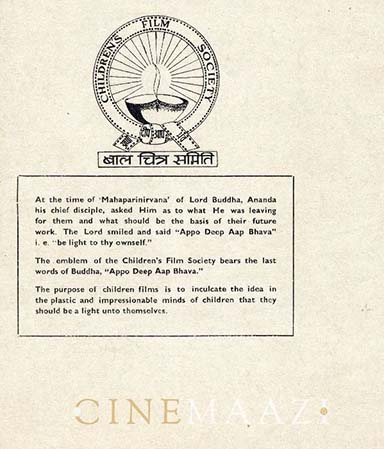
After CFSI made the first film, Jaldeep (Kidar Sharma, 1955), Jawaharlal Nehru sat with a few children on his birthday and interacted with them about the film and children film in general. When he asked children about their favourite parts from the film Jaldeep, most responses were of comic bits. He then emphasised the importance of films in identifying and understanding nature such as bird songs, stars constellations, and rivers.
In 1966, then I&B minister Indira Gandhi also echoed the similar views of children’s films. She called cinema a “double edged sword” which can educate and cause damage as well. Therefore, a serious deliberation is important before producing and exhibiting films for children.
These instances of state’s early position on children’s film reveal the importance of cinema in nation building. The modern nation needed a dispersal of constitutional and national values in a diverse country consisting of many linguistic, class, caste, gender, and religious identities. Cinema became one of the most powerful yet subtle medium to do so. While the cinema of 1950s by the likes of Raj Kapoor, Guru Dutt, and Mehboob Khan is often understood within this paradigm, the Children’s Film Society worked with the young population. The next generation of political and national subjects were crucial for the post-colonial state. Therefore, cinema became an infrastructure for state to educate the children. However, unlike the text books and school education, cinema offered something in excess to its text. Scholars have argues that the state’s early attempt at censorship was aimed at regulating this access which circulated as affect (Prasad, 1999; Sundaram, 2015). Madhav Prasad argues that the ban on kissing in the 1960s was to create and sustain the traditional imagination of a heterogenous couple. Similarly, the emphasis on regulating the films made for children and bringing on board the people who understand children psychology was an attempt to conceal the other edge of the sword. This also echoes the suggestion given by the League of Nations committee where they suggested that the films for children should not be screened in a dark theatre and alternate projection method to be arranged. Not only the content, but the material conditions of cinema are to be managed for the young audiences.
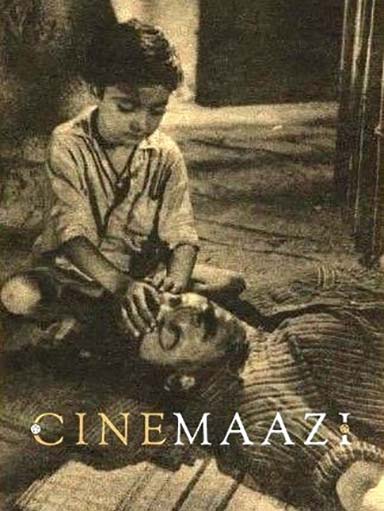
To Preach or To Reach?
In a similar vein, Satyajit Ray professed to give agency to children. In an interview with Meher Pestonji in the January edition of Filmfare Magazine from 1980, Ray showed his dislike for the “childish film” which patronize and infantalize the young audience. According to Ray, the children are capable of understanding and enjoying much more than what “an adult [filmmaker] will grant him.” He maintains that children can understand shades of grey and complex characters such as Robin Hood. Giving the examples of films like Pinocchio, Thumbelina, and Snow White, Ray argued that some films can be enjoyed by both adult and children. However, he was also cautious of producing films which just offer entertainment without education, as the kids “hanker after entertainment”. He also likened learning morals with a feeling of glow and opposed it to didactic sermons, similar to what Hariharan mentioned. A children’s film stages a make-believe world where the child can experiences real life events through fantastical stories and go home with a feeling of glow, that the right people are happy in the end, a positive closure, a happy ending.
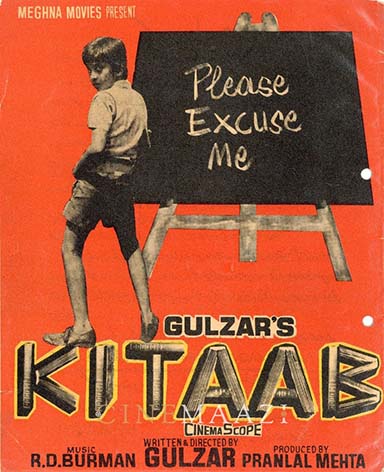
The above three instances are clearly different from the early positioning of the state authorities on children’s films. Although the education and social development are still important, the aesthetics and ideologies of filmmaking are put into question. From the filmmakers point of view, elements of storytelling are as important as the message which the stories share. In their assessments as well, one can read the tension between the text and techniques when it comes to make a successful children’s film.
After the liberalisation, the import of films from other parts of the world increased. The satellite TV along with media devices like CD-ROM had made those films proliferate even more. At this juncture, what the filmmakers like Ray and Hariharan had put forth become even more intensified. Import of films like Harry Potter had created a demand for big budget films which was difficult to produce for CFSI and to distribute for individual directors. Directors like Sai Paranjpye, Vishal Bharadwaj, and Santosh Sivan made realistic and grown up children’s film like Bhago Bhoot (2001), Makdee (2002), and Halo (1996). The word for the films of this moment was - slick!
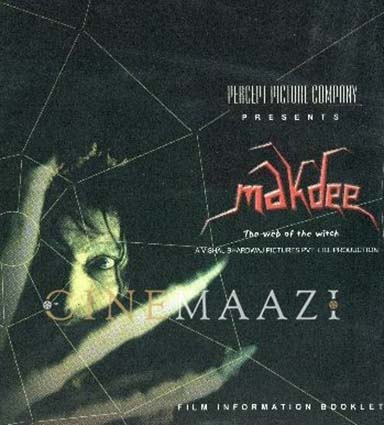
The three temporal moments mentioned above are less to chart a historical arc and more to highlight the ideological, aesthetic, and infrastructural concerns around children’s films. As a genre and mode of filmmaking, children’s film reveal important concerns around cinema. As an apparatus which relies on the traditions of meaning making and perception, cinema encounters a moment of crisis when it comes in front of an audience which hasn’t yet completely become part of those perceptual regimes. While it is important to educate children about various aspects of life, nature, and community, the question of appropriate means always lurks in the mind of a children’s filmmaker. Along with that, the regulation of children’s film by the state or dominant morality also suggests the slippery aspect of cinematic image, its unstability as opposed to a written book. As Indira Gandhi mentioned it is a double edged sword after all. However, the discussions of children films shows us how the other edge can be blunted or concealed for the image to have positive impact on the children. It is the aesthetic elements, as Ray, Hariharan, and Somani suggest, which can help create that positive effect and a feeling of glow in Satyajit Ray’s words. Lastly, the distribution or circulation of children films brings a threat to the above two aspects. The films which are not regularized and monitored by experts will always find their ways to reach the young audiences. In that case, the other edge of the sword may get even sharper and cause harm. And therefore a holistic approach to entertainment, education, and moral character of children is required. Which makes cinema a part of larger infrastructural network that (en)frames children’s growth and education. Cinema along cannot spoil children nor can it alone make them the ideal citizens. While it is an important factor in children’s growth, more often than not only cinema bears the brunt of the wrong that the young generation do, be it crime or be it violence.
The answer to what is children’s cinema? opens up a contested terrain where the precipitated and traditional forms of meaning making gets destabilized and the responsibility for education and character of children gets distributed. The significance of children’s films lies in its capability to push the boundaries of aesthetics, technology, and morality. It disturbs the taken for granted nature of cinema as institutional and technological form and consequently the regimes of perception and morality.
References:
https://warwick.ac.uk/services/library/mrc/archives_online/exhibitions/film/child_welfare/
https://www.cinemaazi.com/feature/let-s-give-the-kids-a-chance
https://www.cinemaazi.com/feature/children-s-films-in-india
https://www.cinemaazi.com/feature/children-s-film-society
Prasad, M. Madhava. Ideology of the Hindi Film: A Historical Construction. India: Oxford University Press, 2000.
Sundaram, Ravi. "Post-postcolonial sensory infrastructure." E-flux Journal 63 (2015): 1-10.
CURRENT TOPICS: CHILDREN'S FILMS
The Times of India (1861-2010); May 24, 1930; ProQuest Historical Newspapers: The Times of India. pg. 10
CHILDREN'S FILM WEEK: P.M. Favours Idea
The Times of India (1861-2010); Nov 14, 1966; ProQuest Historical Newspapers: The Times of India. pg. 1
A DIRECTOR SPEAKS...: CHAYA SRIVATSA talks to Hariharan, a young ...
The Times of India (1861-2010); Dec 10, 1979; ProQuest Historical Newspapers: The Times of India. pg. 19
Whither Children's Films?: The first international children's film ...
The Times of India (1861-2010); Dec 10, 1979; ProQuest Historical Newspapers: The Times of India. pg. 19
Child power: Jaya Bachchan, chairperson of Children's Film Society of ...
The Times of India (1861-2010); Oct 27, 1991; ProQuest Historical Newspapers: The Times of India. pg. 15
New approach to children's films needed: Morals then are out just as ...
Nikhat Kazmi The Times of India News Service
The Times of India (1861-2010); Nov 20, 1995; ProQuest Historical Newspapers: The Times of India. pg. 13
'I didn't want cutesie pie kids, I wanted rustic ones': Sai Paranjpye ...
The Times of India (1861-2010); Apr 22, 2001; ProQuest Historical Newspapers: The Times of India. pg. 4
Children's films need to grow up
Banerjee, Piali
The Times of India (1861-2010); Dec 4, 2002; ProQuest Historical Newspapers: The Times of India. pg. 2
Tags
About the Author



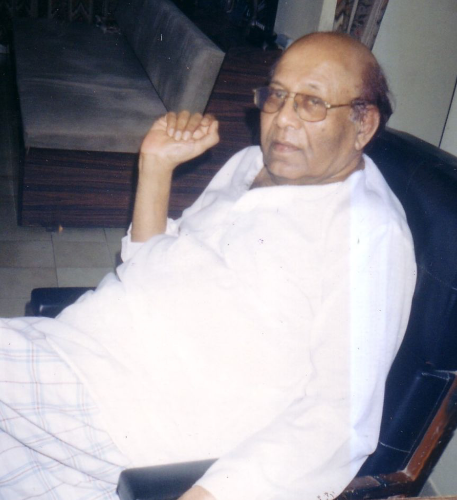



.jpg)


